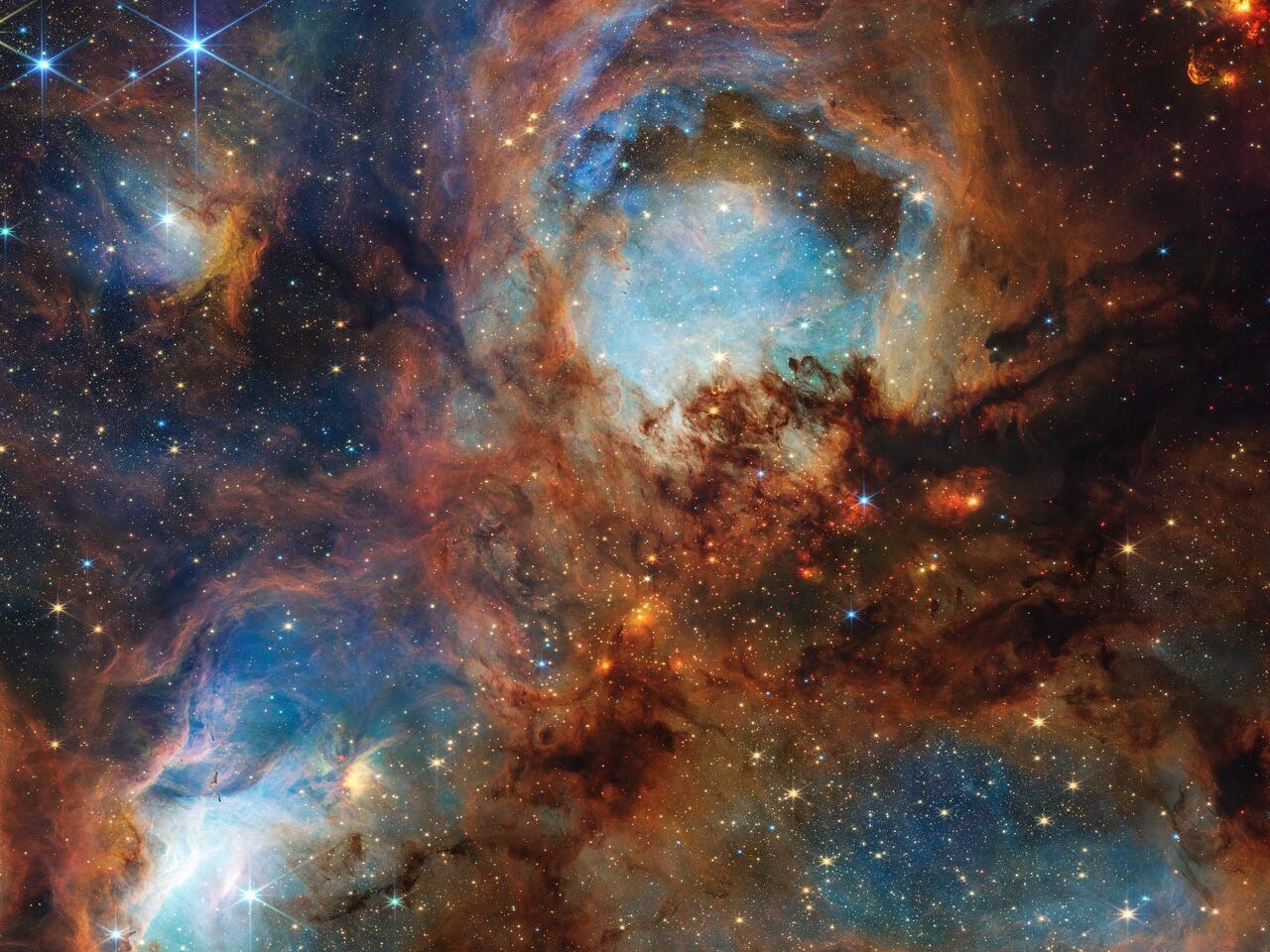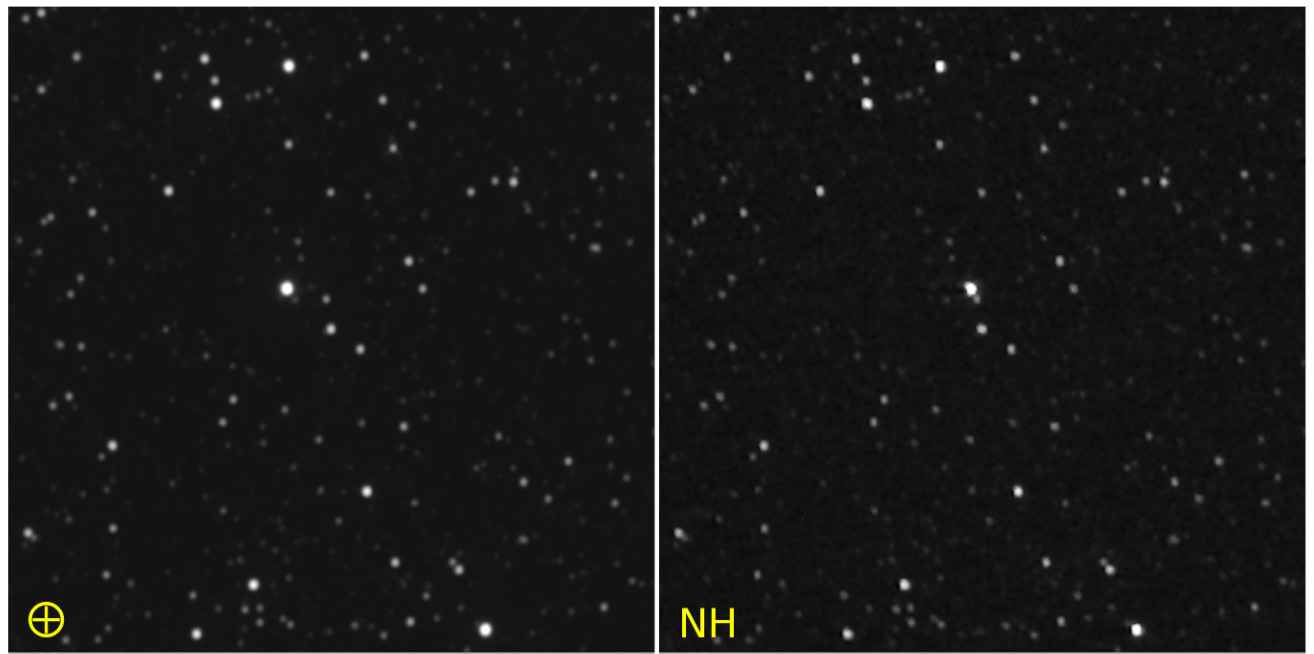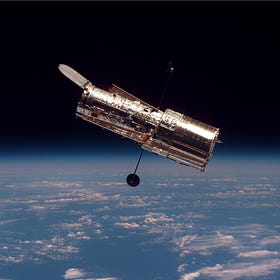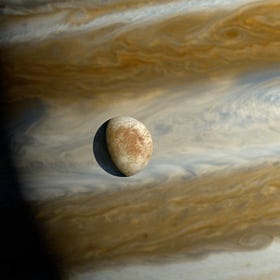The Week in Space and Physics: The Third Interstellar Comet
On interstellar comets, navigating to the stars, the social lives of quarks, and the lost rivers of Mars

Could it be the oldest object in the solar system?
In early July, astronomers announced the discovery of 3I/ATLAS, the third comet known to have entered our solar system from interstellar space. That is rare enough, but then, based on the direction it came from, astronomers announced an even more astonishing possibility. This comet could be, they say, a relic from an ancient solar system, and might have formed billions of years before our sun was born.
3I/ATLAS is currently close to the orbit of Jupiter. But it is travelling fast, moving at over two hundred thousand kilometres per hour. By October, it will have crossed the orbit of Mars, and will then make its closest approach to our star. The Earth, at that point, will be situated on the other side of the Sun. 3I/ATLAS will not be visible then, but afterwards, for a few weeks in November and December, it should be bright for small telescopes to pick it out.
Sadly, it will never shine strongly enough for the naked eye to see it. Yet, as the comet will pass fairly close to Mars, there is some possibility that our armada of probes and orbiters around the Red Planet might be able to see it. After December, however, it will be gone, fading as it once again speeds into the depths of interstellar space.

We know little for certain about this visitor to our solar system. However, in an early study, the astronomer Matthew Hopkins noted that its trajectory traces back to a region of old stars orbiting above and below the main plane of the galaxy. Possibly, he suggests, this comet came from one of those stars, and if so, it is likely to be more than seven billion years old. That would make it markedly older than the Sun.
It would also make it far older than either of the two interstellar comets seen before – 1I/Oumuamua and 2I/Borisov. Oumuamua, in particular, drew attention for its unexpected movements and strange shape, neither of which matched our ideas about the kinds of objects that might come from interstellar space.
The new comet seems certain to offer surprises of its own, especially if it really is as old as Hopkins suggests. Sadly, our window of observations will be short. The comet will only be visible to our telescopes for a few months, and no space probe could possibly catch it in time.
Fortunately, it will not be the last visitor. As our observing abilities improve, especially with the arrival of the Vera Rubin telescope, we are likely to spot many more interstellar visitors in the coming years. In time we may even send a probe to visit one – and, if we do, we will have our first chance to examine something that originated far beyond our solar system.
New Horizons Navigates by the Stars
Navigating by the stars is an old trick here on Earth. Sailors once used the method to chart their passage across the world’s oceans, and a sextant was even fitted on board early versions of the jumbo jet for aerial navigation.
Yet today satellite constellations have rendered the art of celestial navigation all but obsolete. One day, however, it might return. When future navigators want to find their way across the vast gulfs of interstellar space, they may once again rely on the stars to track their progress.
We have few opportunities to practice this today. But New Horizons, the spacecraft that flew past Pluto in 2015, has now travelled so far it can serve as a decent test for future interstellar navigation.
From its viewpoint, indeed, the constellations do not appear quite as they do from Earth. Because it has moved so far out from the Sun, some of the nearest stars to us appear to its view to be in slightly different positions. By quantifying this shift, and then looking at how the stars are arranged on a three-dimensional chart, New Horizons can work out both how far it has travelled from the Sun and in which direction.

In a paper uploaded to arXiv at the end of June, researchers outlined how they’d tested this approach for the first time. They used a camera on New Horizons to photograph two nearby stars: Proxima Centauri and Wolf 359. By measuring their parallax – that is, the small shift in the positions of nearby stars due to a change in viewpoint - the researchers were able to establish where New Horizons was when the images were taken.
Their results were accurate to within a few tens of millions of miles. That sounds like a lot, but it is really quite small considering the scale of interstellar voyages. And better instruments, they note, should be able to get more accurate results. Celestial navigation, then, really might one day take us to the stars.
The Introverted Quark
Quarks, in general, are social particles. They like to cluster in groups and when they do, they form larger particles known as hadrons. We should be grateful for this – after all, we are all made of protons and neutrons, and these only exist thanks to the extroverted nature of quarks.
But there has long been an exception to this social character. The top quark, the most massive of the six known types of quark, was thought to live a short and lonely life. As the particle is unstable, it rapidly decays: each top quark hangs about for no more than a fraction of a nanosecond after it is born. That doesn’t give it much time to bond with any other quarks, and thus the theoretical grouping of two top quarks - ‘toponium’ - was thought impossible.
Yet experiments earlier this year at the Large Hadron Collider detected unexpected signs that toponium might somehow have been created. And last week, results from a separate experiment at the same collider spotted the same thing. Toponium, it now seems, is indeed real.
This result will probably not overthrow our theories of physics. But it does show we still have much to learn about how fundamental particles and forces behave at higher energy levels. And that, fortunately, is exactly what the Large Hadron Collider was built to study.
The Rivers of Mars
A PhD candidate at Britain’s Open University has traced thousands of miles of ancient riverbeds on Mars. This, the Royal Astronomical Society said, is a sign that Mars was once wetter and warmer than researchers often assume.
The candidate, Adam Losekoot, looked for “fluvial sinuous ridges”, rock formations that probably formed as sediment fell to the bottom of flowing rivers. Later, when the water was gone, winds eroded the terrain around the riverbeds. But as the sediment had collected in hard layers, those beds tended to resist erosion, and so today they appear as raised ridges in the dry Martian terrain.
These ridges, he says, are widespread and form complex patterns. That suggests the rivers were long-lasting, and were not the temporary aftermath of occasional floods. At least some regions of Mars, he thinks, probably looked very Earth-like, with rivers flowing serenely through barren landscapes of hills and valleys.

Read More
The Europa Clipper: Are There Oceans On The Second Moon of Jupiter?
Due to personal commitments I have not been able to write a full article this week. Instead I am making this article, previo…
The Nobel Prize in Physics: An Imitation of Thought
Can a machine think? The question is a vague one, not least because we have no proper definition of what “thinking” actually is. Stretch it…



